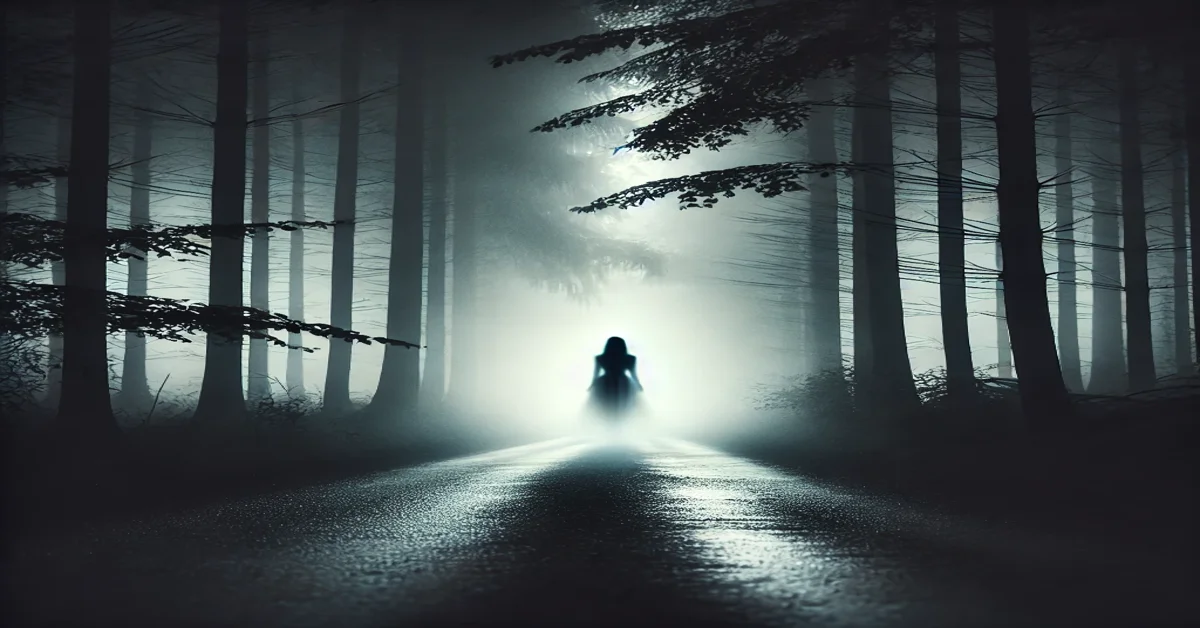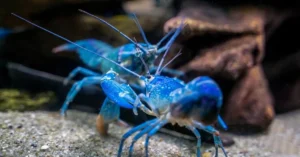The tale of Teresa Fidalgo has captivated countless souls, weaving its way through the dark corners of the internet. A haunting story wrapped in mystery and intrigue, it speaks to our fascination with the unknown. Who is Teresa Fidalgo? Why does her legend continue to spread like wildfire across social media platforms?
As we dive deeper into this enigmatic figure, we’ll uncover the origins of her story and explore how it evolved into a viral phenomenon. From chilling encounters to eerie videos, Teresa’s name has become synonymous with urban legends in digital culture.
But what if we look beyond mere ghost stories? What lies beneath this web of myth and reality? Join us as we unravel the threads surrounding Teresa Fidalgo and examine why such tales resonate so deeply within us all.
Teresa Fidalgo: A Mysterious Figure
Teresa Fidalgo is shrouded in mystery and intrigue. The story goes that she was a young woman who tragically lost her life in a car accident. Her spirit, however, did not rest, leading to countless chilling tales of encounters with unsuspecting travelers on desolate roads.
What makes Teresa’s legend particularly captivating is its mix of tragedy and the supernatural. Many claim to have experienced strange occurrences after hearing her story or interacting with social media posts about her haunting presence. These accounts continue to fuel fascination and fear alike.
The allure of Teresa lies not just in the eerie elements but also in how easily it resonates within our collective consciousness. As urban legends often do, it prompts us to ponder our beliefs about life, death, and what may linger beyond our understanding.
Origin of the Story
The tale of Teresa Fidalgo began in Portugal during the early 2000s. The story centers around a young woman who tragically died in a car accident, allegedly haunting those who encounter her spirit. This urban legend quickly captured the imaginations of many.
Social media played a pivotal role in spreading this eerie narrative. It morphed from local folklore into an international phenomenon as people shared their experiences and warnings about encountering Teresa on dark roads late at night.
As word spread, so did variations of the tale, each adding layers to her mystique. Some claimed that merely speaking her name could summon her ghostly presence, heightening fears and intrigue surrounding this enigmatic figure.
Spreading the Legend
The legend of Teresa Fidalgo quickly gained traction across various platforms. Social media played a pivotal role in its dissemination, with users sharing chilling stories and videos that left many questioning their authenticity. The eerie narrative about a ghostly hitchhiker captured the imaginations of countless individuals.
As the tale spread, it morphed into new versions, each adding layers to the mystery. From memes to short films, creators found endless inspiration in Teresa’s story. This adaptability helped keep her legend alive in digital spaces.
Despite its fictional roots, Teresa Fidalgo became an emblem of modern folklore. Her haunting presence served as a reminder of how urban legends can thrive online, transforming from local tales into global phenomena almost overnight.
Impact on Internet Culture
The tale of Teresa Fidalgo has become a viral sensation, captivating countless internet users. As a ghostly figure linked to chilling stories and eerie videos, she embodies the essence of online folklore. The uncertainty surrounding her existence invites curiosity and fuels discussions across various platforms.
Social media played a pivotal role in spreading her legend. Users have shared their encounters and interpretations with fervor, transforming her story into an interactive experience. Memes, videos, and even TikTok challenges keep the narrative alive while evolving it for new audiences.
This urban legend represents more than just fear; it’s a cultural phenomenon that merges storytelling with digital engagement. It illustrates how easily myths can transform in the age of technology, leaving us questioning what is real versus what is imagined in our hyper-connected world.
Debunking the Myth
The tale of Teresa Fidalgo has captivated many, but it’s essential to separate fact from fiction. Numerous investigations have shown that the story is rooted in urban legend rather than reality. The narrative often shifts, leading to different versions that blur the lines between truth and myth.
Examining online sources reveals inconsistencies that raise eyebrows. From conflicting accounts about her supposed accident to varying descriptions of her haunting, these discrepancies reveal a story designed more for entertainment than factual accuracy.
Experts in folklore suggest that such legends thrive on emotional appeal rather than objective evidence. They argue that engaging storytelling can easily overshadow critical thinking. This pattern creates a fascinating yet misleading tapestry surrounding figures like Teresa Fidalgo, inviting curiosity while masking the truth beneath layers of embellishment.
Analyzing the Facts
When diving into the tale of Teresa Fidalgo, it’s essential to sift through the layers of myth and reality. The story claims that she was a young woman who died tragically in an accident, haunting those who dare to share her name. However, evidence suggests this narrative has evolved over time.
Investigating local archives reveals no records of such an incident involving a Teresa Fidalgo. Instead, it appears the legend gained traction through social media platforms and viral videos. These narratives often attract attention due to their eerie nature.
Additionally, many claim encounters with her spirit after sharing her story online. Such experiences are likely fueled by psychological phenomena like suggestion and confirmation bias rather than genuine paranormal activity.
Expert Opinions
Experts in folklore and urban legends often provide fascinating insights into the story of Teresa Fidalgo. They emphasize that many urban myths arise from a combination of cultural fears and societal norms. In this case, Teresa’s tale taps into deep-seated anxieties about roads at night and the unknown.
Psychologists suggest that people are drawn to such stories because they evoke strong emotional responses. The thrill of fear can be exhilarating, leading individuals to share these tales widely. This phenomenon turns ordinary narratives into cautionary tales.
Moreover, media analysts point out how social platforms amplify these legends exponentially. Videos claiming authenticity or eyewitness accounts gain traction quickly, drawing in curious viewers eager for chills. This dynamic fuels the enduring popularity of figures like Teresa Fidalgo in popular culture.
The Psychology Behind Urban Legends
Urban legends often thrive on the human tendency to share stories that evoke strong emotions. Fear, curiosity, and intrigue are powerful motivators that drive people to pass along tales like that of Teresa Fidalgo. These narratives create a connection among individuals as they bond over shared experiences or fears.
Additionally, urban legends can fulfill a psychological need for uncertainty reduction. When faced with unknowns in life, people seek explanations or frameworks to make sense of their world. Legends can offer answers—however fantastical—that satisfy this desire for understanding.
Moreover, cultural factors play a significant role in shaping these narratives. They reflect societal anxieties and values at specific points in time. As such, urban legends become mirrors of our collective consciousness, revealing what we fear or find intriguing about the world around us.
Why Do People Believe?
People are naturally drawn to stories that evoke strong emotions. Urban legends like Teresa Fidalgo tap into our fears and curiosity, making them compelling. The allure of the unknown can create a sense of urgency in sharing these tales.
Cognitive biases play a significant role too. When we hear something repeated often enough, it starts to feel true. Familiarity breeds trust, even if the story lacks evidence. This psychological phenomenon helps urban legends gain traction over time.
Additionally, social factors contribute to belief. Sharing spooky stories strengthens community bonds and provides entertainment during gatherings. As friends recount their own experiences with legends like Teresa Fidalgo, they reinforce each other’s beliefs and perpetuate the myth further into popular culture.
Effects on Society
Urban legends like the story of Teresa Fidalgo often create a ripple effect in society. They spark curiosity and discussion, drawing people into shared experiences that can foster community among those who believe or share the tale. This collective engagement blurs the line between reality and fiction.
Such stories also tap into our primal fears and fascination with the unknown. The fear of ghosts or supernatural occurrences can amplify social bonding, as friends recount chilling tales around campfires or during late-night gatherings. These narratives become cultural touchstones.
Moreover, urban legends influence various forms of media—from films to viral videos—shaping how we perceive horror and mystery today. As these legends circulate, they challenge societal norms about truth and belief while serving as cautionary tales for future generations.
Conclusion
The story of Teresa Fidalgo continues to captivate and intrigue. This mysterious figure has woven herself into the fabric of urban legends, blending reality and fiction in a way that keeps people talking. From her haunting origins to the modern reinterpretations circulating online, Teresa Fidalgo remains an emblem of our fascination with the unknown.
As we delve into these tales, it’s clear they serve more than mere entertainment; they reflect deeper psychological truths about human nature. Urban legends like this can unite communities through shared fears or experiences while also prompting critical thinking about what we accept as truth.
Whether you view Teresa as a ghostly apparition or just another tale spun by creative minds, she undoubtedly plays a significant role in internet culture today. Understanding why such stories resonate helps us navigate our complex relationship with myth-making in the digital age.
So, next time you hear someone mention teresa fidalgo, consider not just her chilling legend but also what it reveals about society’s penchant for storytelling and belief.









